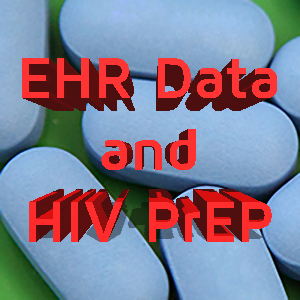Posted By Hope Alfaro On January 26, 2017
Using EHR data to select candidates for HIV PrEP

The increase in medical technology including Electronic Health Records (EHR) has greatly increased the amount of available health data for both research and treatment. Many public health departments, community health centers (FQHC), and private practice have already made the move. HIV clinics are also seeing the benefits of increased data and treatment outcomes for patients using EHRs. But treatment of existing conditions is not enough. Is there a way to use information from your EHR for disease prevention as well?
HIV pre-exposure prophylaxis (PrEP) greatly decreases HIV transmission. The US Food and Drug Administration (FDA) approved Truvada (tenofovir/emtricitabine) for HIV prevention in July 2012. Studies of gay and bisexual men have shown that PrEP reduces the risk of acquiring HIV by more than 90% if used consistently, with no new infections among people who took it at least four times a week. Still, uptake of the medication has been slow. One of the major barriers to getting more people on PrEP is not having sexual health and risk evaluations done as part of routine care, as providers have competing demands and may lack the training and comfort to discuss sexual health with their patient.
Here is where advanced technology and data routinely stored in EHRs can help providers increase preventative efforts against communicable disease. According to a research study selected as a featured abstract by the HIV Medicine Association IDWeek 2016 in New Orleans, the data already found in EHRs can help identify patients at increased risk for incident HIV who are potential candidates for PrEP. To do this, the research team led by Dr Douglas Krakower of Beth Israel Deaconess Medical center, looked at more than 100 variables including patient demographics, recorded diagnoses, medication prescriptions, laboratory tests and procedures. They then matched each of the 138 patients who became infected with HIV between 2006 and 2015 to 100 control subjects of the same sex and similar duration time at the health center who remained HIV-negative, comparing their characteristics and risk factors. The research identified about 1.1% of the general population as potential PrEP candidates.
The investigators concluded that automated analysis of data routinely stored in electronic heath records can identify patients at increased risk for HIV who are potential candidates for PrEP. This study is another example of the positive benefits of enhanced patient data and demographics to improve healthcare and health outcomes. Converting to an EHR may seem like a great feat for clinics and departments still working from paper charts but the benefits far outweigh the upfront costs and work.
More Information:
Research Abstract : Automated Identification of Potential Candidates for HIV Pre-Exposure Prophylaxis using Electronic Health Record Data
To learn more about IDWeek 2017, see the conference website.